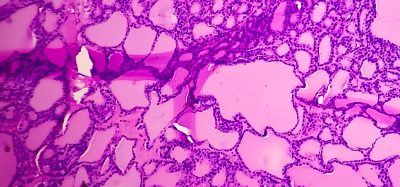How a PRL3-targeting cancer drug could help millions see again
Posted: 22 July 2025 | Drug Target Review | No comments yet
Singapore researchers have found that cancer drug PRL3-zumab shows strong potential for treating wet age-related macular degeneration and diabetic retinopathy – two leading causes of blindness worldwide.


Researchers from the ASTAR Institute of Molecular and Cell Biology (ASTAR IMCB) in Singapore have announced a new treatment approach for two major causes of vision loss. The pre-clinical study, published in Nature Communications, reveals that the cancer drug PRL3-zumab can effectively reduce leakage from damaged blood vessels – a key contributor to vision impairment.
Tackling wet age-related macular degeneration and diabetic retinopathy
Collaborative research by scientists at A*STAR IMCB and local biotech company Intra-ImmuSG (IISG) highlights PRL3-zumab’s potential to treat wet age-related macular degeneration (AMD) and diabetic retinopathy. Both diseases are among the leading causes of blindness globally, severely impacting the quality of life for millions of people.
Addressing limitations of current treatments
Current standard treatments for these eye diseases involve monthly injections directly into the eye – a process known as intravitreal injection. This invasive procedure carries risks such as infection and lens damage. Additionally, up to 45 percent of patients show inadequate responses to these treatments – highlighting the urgent need for alternative therapies.
Biomarkers are redefining how precision therapies are discovered, validated and delivered.
This exclusive expert-led report reveals how leading teams are using biomarker science to drive faster insights, cleaner data and more targeted treatments – from discovery to diagnostics.
Inside the report:
- How leading organisations are reshaping strategy with biomarker-led approaches
- Better tools for real-time decision-making – turning complex data into faster insights
- Global standardisation and assay sensitivity – what it takes to scale across networks
Discover how biomarker science is addressing the biggest hurdles in drug discovery, translational research and precision medicine – access your free copy today
Current standard treatments for these eye diseases involve monthly injections directly into the eye – a process known as intravitreal injection
PRL3-zumab offers a new approach by enabling intravenous administration. In pre-clinical trials, intravenous delivery resulted in an 86 percent greater reduction in abnormal blood vessel leakage compared to intravitreal injections – offering a potentially safer and more effective treatment method.
The study showed that intravenous delivery achieved more sustained therapeutic levels in the eye than traditional injections, while also avoiding associated complications.
Moving toward human trials
Encouraged by these results, the research team is preparing for human clinical trials after receiving approval from Singapore’s Health Sciences Authority (HAS). These trials are expected to commence by late 2025.
Notably, PRL3-zumab has already completed Phase II trials in cancer patients with a favourable safety profile – providing a strong foundation as researchers explore its use for eye diseases.
From cancer research to eye disease treatment
Professor Qi Zeng, Senior Principal Scientist at A*STAR IMCB and founder of IISG, originally discovered the PRL3 protein in 1998 as a factor in cancer metastasis. Later studies revealed PRL3’s unexpected role in eye diseases. “When I first identified PRL3 over two decades ago, I never imagined that our cancer research could also provide hope for patients facing blindness,” said Professor Qi Zeng, senior author on the study. “Seeing PRL3-zumab now potentially transform treatment for devastating eye conditions shows how fundamental scientific discoveries can lead to life-changing outcomes.”
Collaborative efforts accelerate development
Associate Professor Xinyi Su, Executive Director of A*STAR IMCB and co-author of the study, emphasised the collaborative spirit driving this breakthrough:
“The repurposing of PRL3-zumab offers the possibility of a faster, more cost-effective and potentially safer path to developing treatments for these eye diseases,” she said. “This is made possible through the close collaborations in Singapore between our scientists, clinicians and clinician scientists.”
This research on PRL3-zumab highlights an innovative jump in treating two of the world’s leading causes of blindness. By offering a safer, more effective intravenous alternative to current eye injections, this repurposed cancer drug demonstrates how scientific discoveries can cross disciplines to address urgent health challenges. With human clinical trials upcoming, PRL3-zumab has the potential to advance patient care and offer new treatment options to millions affected by vision loss worldwide.
Related topics
Biotherapeutics, Clinical Trials, Drug Discovery Processes, Drug Repurposing, Ophthalmology, Therapeutics, Translational Science
Related conditions
vision impairment., Vision loss
Related organisations
the ASTAR Institute of Molecular and Cell Biology (ASTAR IMCB)








